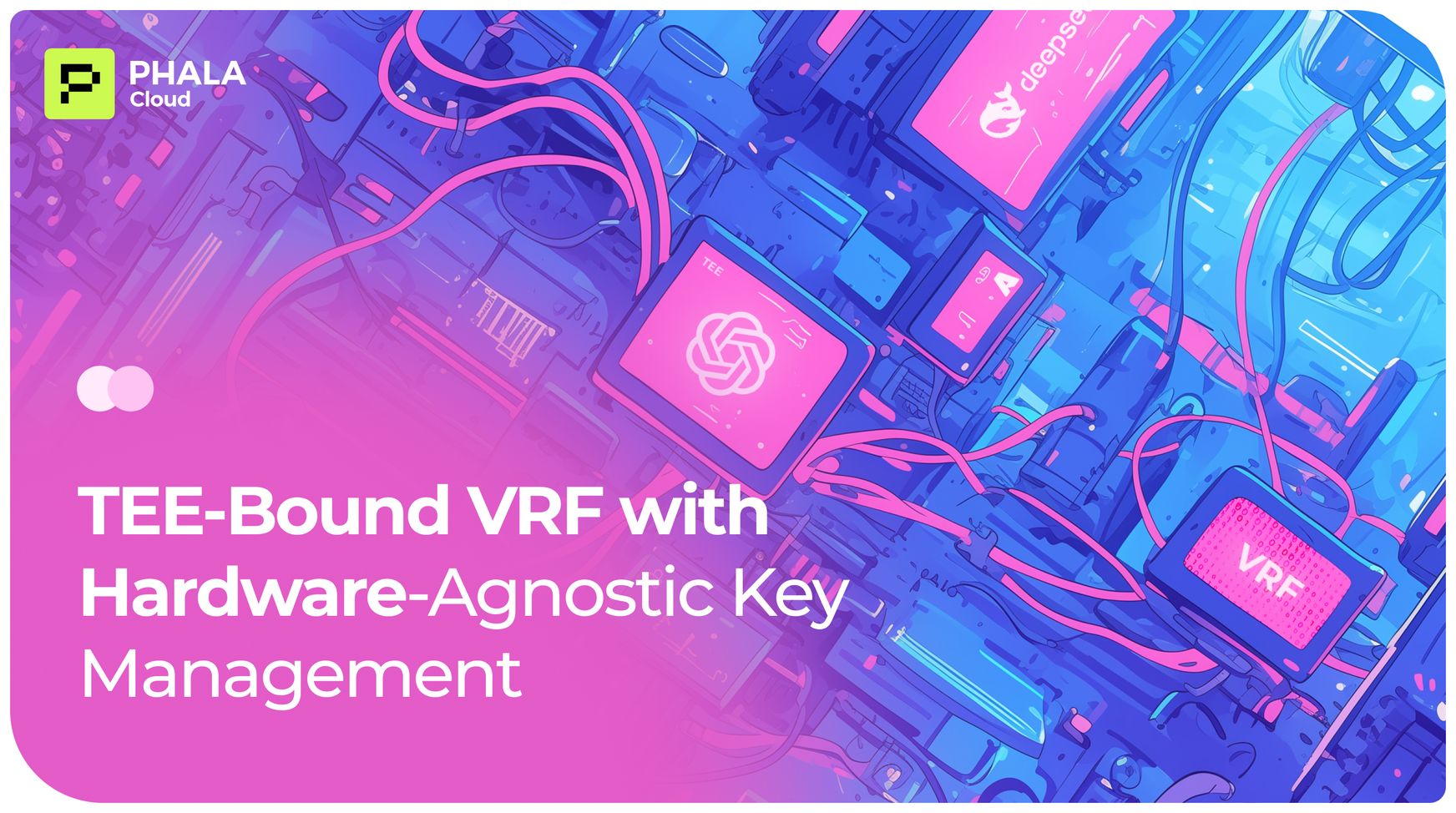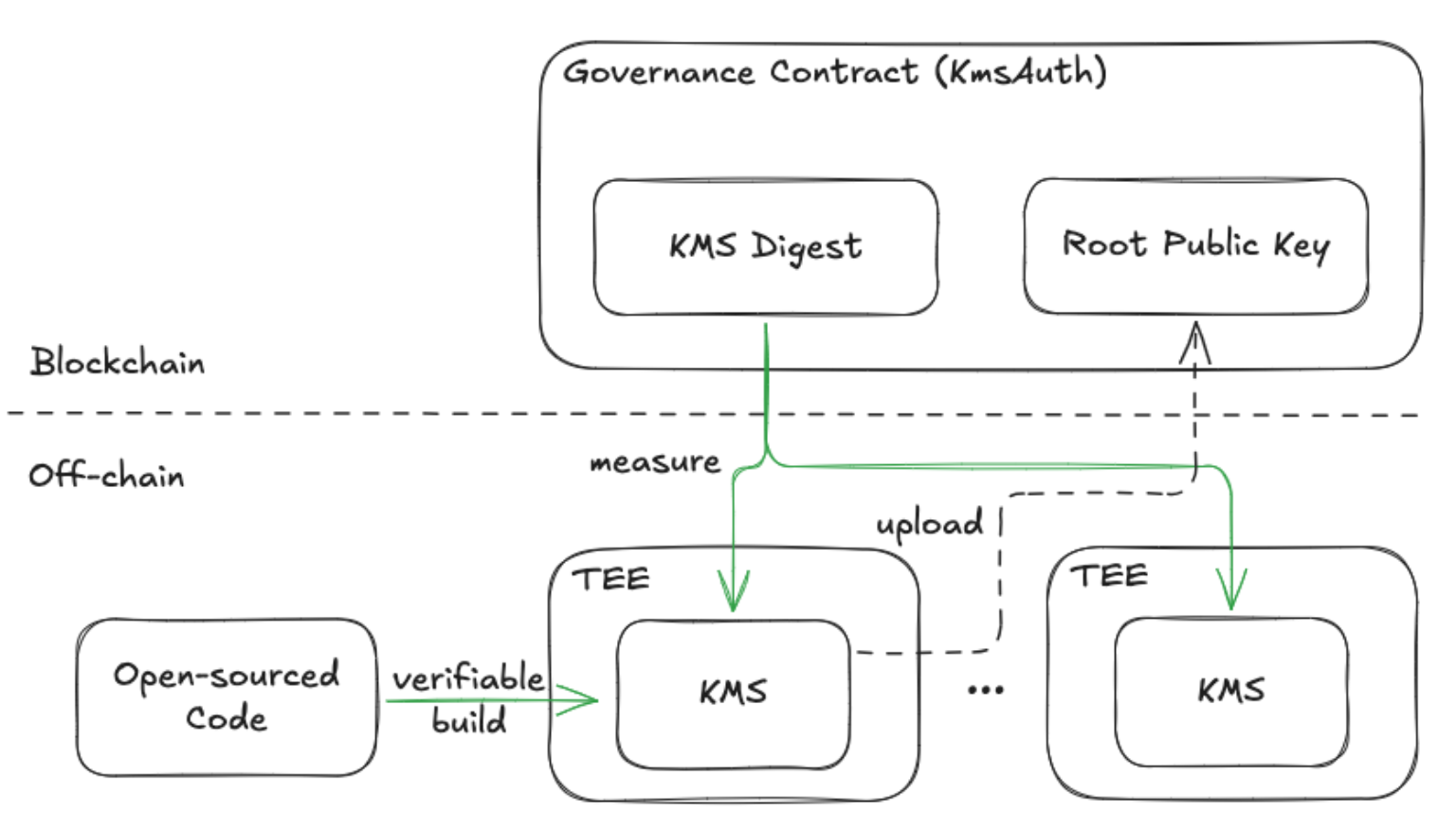
The VRF Challenge: Determinism Meets Vulnerability
Randomness powers the fairness of Web3. From validator elections to DAO governance to lottery draws, Verifiable Random Functions (VRF) are the invisible engines making sure no one cheats.
But here’s the catch: traditional VRFs rely heavily on hardware-bound secrets inside Trusted Execution Environments (TEEs). That means:
Offchain Random Generator:
random_number = VRF_HASH(SK, input)
signature = VRF_SIGN(SK, random_number)
Onchain Contract Validation:
VRF_VALIDATE(PK, signature)- If the hardware is compromised → the secret key is gone, permanently.
- If the hardware fails → the service stops, instantly.
In other words, determinism meets vulnerability. They generate deterministic randomness tied to a secret key (SK):
The TEE traditionally hosts this SK, leveraging hardware isolation for security. But such implementations face critical limitations:
- Key Immutability: Hardware compromise ⇒ permanent key leakage
- Hardware Dependency: TEE failure ⇒ service termination (single points of failure)
Breaking the Lock-In: Enter dstack-kms
dstack-kms fundamentally transforms encryption key management in confidential computing. Unlike hardware-bound approaches, it generates a unique, stable Application Key for each application based on its code and configurations. This Application Key serves as the cryptographic foundation for:
- Secure data encryption
- Verifiable random number generation
The revolutionary shift:
Hardware-Bound Keys → dstack-kms
│ │
Static/Immutable │ Dynamic/Portable
│ │
Single Point of Failure → Censorship-ResistantCore breakthroughs:
- Hardware Decoupling
Deliberately separates key generation from TEE hardware, enabling encrypted data migration between TEE instances with authorized decryption.
- Threat-Aware Design
Acknowledges TEE compromise risks through:
- Comprehensive key rotation (backward + forward secrecy)
- Minimal data exposure during migration
- Governance-controlled secret derivation
- Persistent Root-of-Trust
Maintains verifiability and availability as the system’s foundational layer, even when individual TEE instances fail.
Architectural Implementation
dstack-kms achieves hardware-agnostic key management through three foundational components:
1. Redundant Key Replication
- Active-active secret sharing across multiple TDX-enabled nodes
- Future MPC integration roadmap: Threshold signatures (t-of-n) for enhanced security
2. Deterministic Key Derivation
Root keys are generated cryptographically from immutable application metadata:
3. Hybrid Consensus Mechanism
- On-Chain Governance + Off-Chain P2P Network:
- On-chain: Governance smart contract controls policies.
- Off-chain: Light-client nodes sync secrets via P2P.
VRF Solution Capability Comparison
| Capability | Chainlink VRF | Traditional TEE VRF | Phala dstack-kms |
| Key Management | ✅ Threshold Encryption in DON | ❌ Hardware-bound (static) | ✅ App-ID anchored (logic-bound) |
| Recovery Time | ⚠️ 5–30 min (manual node replacement) | ❌ Single point of failure | ✅ Fast Re-Deployment in seconds |
| Execution Environment | ✅ Globally Distributed DON | ❌ Single hardware instance | ✅ Phala TDX network |
| Key Rotation | ✅ DON-managed rotation | ❌ Not Supported | ✅ Backup TEE Nodes(MPC in the future) |
| Data Latency | ⚠️ Minutes to hours | ✅ Low latency (hardware-bound) | ✅ Sub-second (off-chain compute) |
| Cost Sustainability | ❌ Extra $LINK | ✅ Fixed costs | ✅ Only Gas fee |
| Chain Support | ❌ Limited Chains | N/A | ✅ Any EVM-compatible chains |
Verification Workflow: End-to-End Verifiable Randomness
Phala’s Flash VRF leverages a triple-layer verification system where cryptographic trust is established through off-chain computation with on-chain validation. Here's the complete technical workflow:
Key Verification Steps:
- Signature Validation: Confirms response originated from attested enclave
- VRF Validation: Cryptographically verifies output corresponds to input
- State Transition: Only valid outputs modify contract state
Failure Recovery Mechanism
When a TEE node unfortunately crashes:
- Backup nodes reconstruct the key in seconds with the same App-id.
- User requests reroute — zero downtime.

Conclusion: Advancing Flash VRF Resilience
Phala's dstack-kms demonstrates how cryptographic key derivation combined with trusted execution environments can overcome fundamental limitations in existing VRF implementations. By:
- Decoupling keys from specific hardware instances
- Implementing governance-controlled key rotation
- Leveraging TDX remote attestation
We establish a new standard for verifiable randomness that maintains:
- Fast Response via TEE-generated keys
- Cryptographic integrity through application-bound keys
- Service continuity via rapid failover mechanisms
- Verifiable trust via on-chain validation
The solution provides particular value for applications requiring:
- Real-time response(e.g., real-time gaming, high-frequency trading)
- High-availability randomness (e.g., gaming, lotteries)
- Regulatory-compliant operations (e.g., RWA tokenization)
- Cross-chain compatibility (EVM and beyond)
Further reading: https://phala.network/posts/Dstack-A-Zero-Trust-Framework-for-Confidential-ContainersImplementation: https://github.com/Phala-Network/phala-cloud-vrf-template